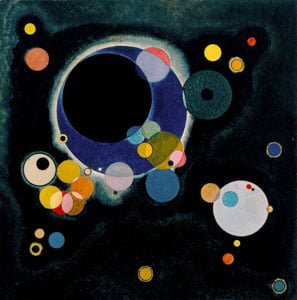- 8 Posts
- 797 Comments

 3·5 小时前
3·5 小时前Considering their instance, I’d assume they’re more out of their mind than huffing Elmo.
Another important part in this argumentation is that each type of telescope has its use case:
Extraterrestrial telescopes, as they are not objected by atmospheric blur can obtain much better ‘images’ from the cosmos even of weak, low brightness signals, which makes them best for observing the ‘far’ cosmos until the boundaries of recognition.
Yet, they are and always will be much more expensive and more difficult to maintain than terrestrial telescopes. Thus, using them for observing our cosmic front yard, the milky way, is like shooting with canons at sparrows.
Due to their cost, extraterrestrial telescopes also will always be ‘few’, too few to effectively keep track of the objects around us. Thus, ‘cheap’ terrestrial telescopes, large professional ones and small ones run by amateurs, will always be needed to observe the objects ‘closely’ around us, i.e. in our galaxis.

 9·5 小时前
9·5 小时前Don’t forget important discoveries are also made by or with the help of amateurs, who permanently observe the night sky and measure the coordinates, i.e. the relative positions, of luminating objects. This allows others, mostly professionals, to calculate their motions and obtain information about the (hidden) masses, i.e. luminating and non luminating objects, inducing and influencing them. By this means, black holes, ‘dark’ masses, or asteroids, ‘fast’ moving illuminated objects, have been and are beeing discovered.

 9·7 小时前
9·7 小时前The number of satellites in orbit around Earth is rapidly increasing, with some 100,000 expected to be in place by 2030. And as their numbers grow, so does the difficulty of observing the universe from Earth.
Starlink’s satellites are bright enough that astronomers have decried them as an existential threat for as long as SpaceX has been launching them into orbit. While the company has taken some measures to mitigate how shiny they appear from Earth, their increased number and the many other satellites being launched means that their light pollution is “threatening the entirety of ground-based astronomy in every wavelength and in different ways,” astronomers told the BBC. There is a fear that soon, space observation might begin to look like a “windshield of bugs,” and become unfeasible, a researcher at the Vera C. Rubin Observatory in Chile told The New York Times.
So basically, at least during the rest of this decade, our billion dollar telescopes, radio and optical, are blind on different frequencies or are only able to obtain diffuse resolution.

 3·19 小时前
3·19 小时前NL
• definitely yes: 3 %
• probably yes: 15 %USA
• definitely yes: 11 %
• probably yes: 17 %

 4·19 小时前
4·19 小时前The data is from this (the link is in the source) survey.
Germany:
• definitely yes: 14 %
• probably yes: 17 %
It seems to be a section of Dresden From the Right Bank of the Elbe Below the Augustus Bridge.
In the painting, the old Augustus bridge from 1721 with its 12 arches is depicted. Today, the ‘new’ bridge, built 1907, has fewer but wider arches.

 4·2 天前
4·2 天前#PlötzlichUndUnerwartet

 2·2 天前
2·2 天前However there’s a reason why the boiler room is usually locked off in a 30 story building. Bleeding a radiator might be relatively harmless, but there’s no way of knowing what the pressure is supposed to be without knowing the entire system.
Exactly. That’s why either the janitor knows the correct pressure or they need to call a technician. Definitely not something to have hands on oneself in a building that’s not yours.

 11·3 天前
11·3 天前It’s the armor of a knight who is fighting on horseback. The green ‘weak spot’ is where the saddle is.

 4·3 天前
4·3 天前Usually, at the
heatingboiler, there is a junction for a hose with a valve and close by a pressure meter. If the pressure is too low, the janitor (not you) should fill up the heating system with water until the pressure is sufficient. Ideally, the pressure should be checked again after bleeding the radiators.

 15·3 天前
15·3 天前Schon, aber um welchen Preis? Merz als Kanzler?

 9·4 天前
9·4 天前Stimmt. Bei Präferenzwahl genügt dann ein einziger Wahlgang um zu einem vergleichbaren Ergebnis zu kommen.

 5·4 天前
5·4 天前Eine Lösung wäre z.B. die Direktkandidaten nicht mit relativer Mehrheit, sondern absoluter Mehrheit zu wählen. Dann findet das taktische Wählen erst im zweiten Wahlgang und nicht schon vorrauseilend beim Ersten statt.

 6·5 天前
6·5 天前Klar machen die auch abgefahrene Mathematik, aber nicht alle mögen das Hands-On. Der theoretischen Physiker, den ich kenne ist eher so nach dem Motto: Experimente? Geh mir weg. Experimentalphysiker seht zu! Eure Probleme sind nicht meine. Die Formeln sind doch da.

 6·6 天前
6·6 天前Ich bin erstaunt, dass sich ein Student eines so theoretischen Fachgebietes wie der Mathematik überhaupt an sowas Praktisches wagt.
Nachtfahrbrille mit gelb getönten Gläsern regelt.
OK, TY. I’ve thought, there were just downloader packages, containing scripts to download the firmware binary from the device manufacturer and install it on the system, like e.g. the one for the Broadcom wireless driver.

 10·6 天前
10·6 天前Fairerweise muss man sagen, dass es um die Autobahnbrücken auch nicht besser bestellt ist und diese in seinen unmittelbaren Aufgabenbereich fallen. Für Brücken von Landstraßen, sowie die Auftragsverwaltung bei Bundesstraßen, der Bund sorgt hier nur für die Finanzierung, sind die Länder zuständig.

 11·6 天前
11·6 天前In meiner Region ist mir auch keine Autobahnbrücke bekannt, die bloß saniert und nicht abgerissen und neugebaut wurde. Das ist bei Konstruktionen aus Stahlbeton bestimmt auch sicherer.








deleted by creator